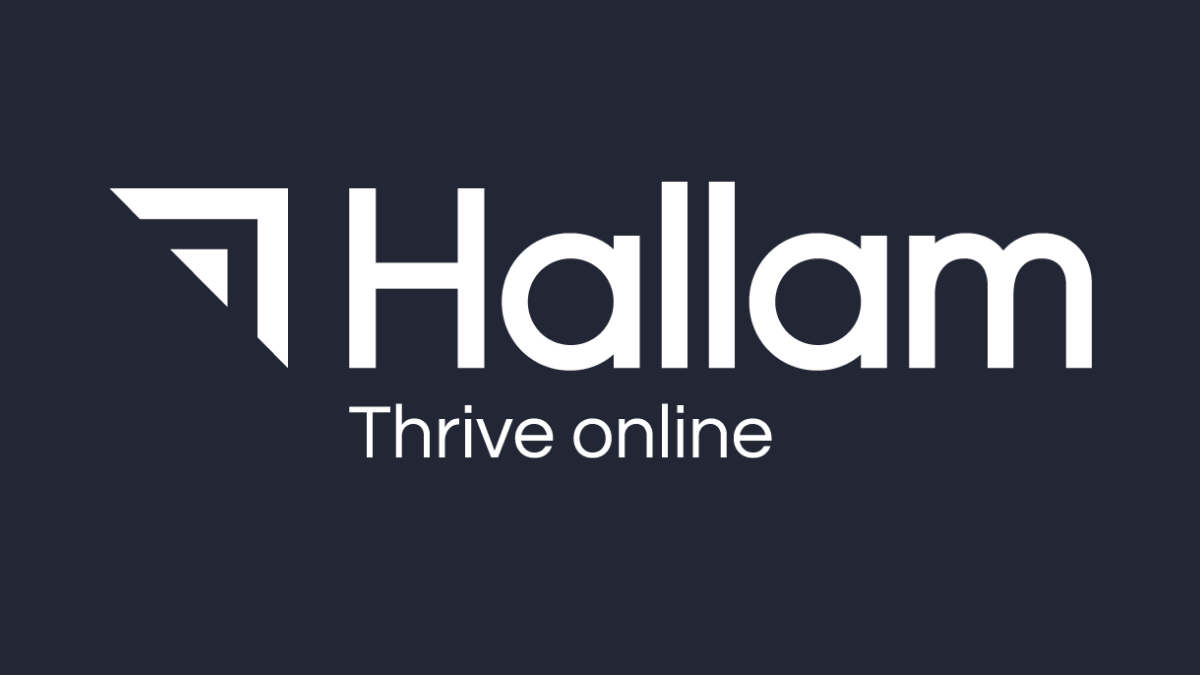In today’s fast paced, digital world, data-driven PR is essential.
Before PR had its renaissance movement and become Digital PR, to determine the value of PR activities and results, PR pros used to count on vanity metrics like AVE (advertising value equivalency) or circulation and readership figures. Those numbers are gradually disappearing while solid metrics are becoming increasingly important.
So how do PR pros substitute AVE numbers when estimating media impressions?
Clients will present different objectives and needs, and we have a bigger than ever choice of media channels. This can mean the pre digital era ‘one-size-fits-all’ type of measurement has left us for good. Those who still believe in AVEs may struggle to demonstrate genuine ROI to their clients.
A bespoke measurement strategy is what we need, one that can accurately track the progress of our PR efforts.
So how do you determine the value of PR?
The Barcelona Principles provide guidelines for how to best measure PR ROI. First introduced in 2010, they suggest that calculating the value of your public relations goes beyond a single monetary amount for media placements. To value your PR efforts, you must understand the overall goals of your clients’ business, identify the metrics that will track whether you reach them, and continuously adjust your strategy.
But interestingly, only 18% of those familiar with the Barcelona principles have adopted them in their daily work. What’s more, 27% of the International Association for Measurement and Evaluation of Communication’s members have admitted that the majority of their clients still demand AVEs.
Good old AVEs eh? I suppose we all love a bargain, and maybe that’s why clients still like to know how much money their coverage would have costed.
Example of AVE: press coverage like this in the Metro National newspaper would have costed around £35,000 if the client had to pay for it. Instead, it came free as a result of the PR outreach.
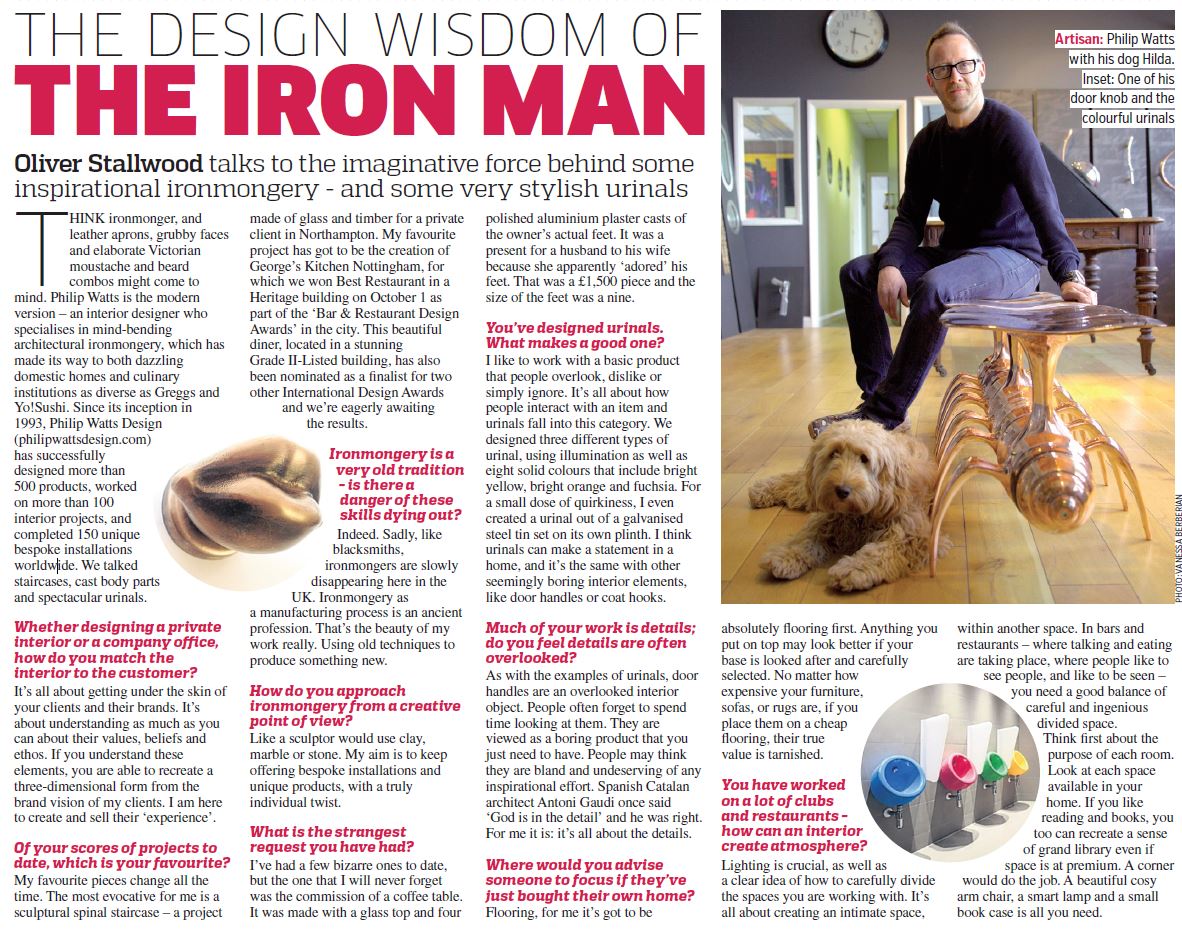
Benchmarking enables us to tell clients how our PR campaign has performed compared to a similar one in the past.
You can look at previous campaigns or your progress year on year or month on month. You can even compare against competitors when possible to understand the value of your PR efforts.
Eight elements to understand the value of your PR work
1. Visibility
To build awareness of your client’s brand, you need to search for other ways to establish authority within your industry. By-lines in trade media news sites, speaking opportunities and engagements, appearances on webinars, podcasts, radio or TV are becoming more and more popular ways to experience first-hand your client’s face/product/service/brand.
Sit down with your client and explain why you’d like for them to be put forward as a thought leader. Explain the audiences you are going to reach and how often you are going to try to this tactic. Whatever the number of commentary pieces or by-lines you are planning to achieve will form the ‘value’ to be quantifiable at the end of the quarter, or at the end of the year. Here’s a good example of a topical opinion piece about UK engineering and the potential Brexit.
Furthermore, if any of your clients like the idea of a specific media outlet, and they have expressed an interest in their ‘wish list’, you need to embrace that, even when you know if it will not give you a link. Like appearing in a TV programme: 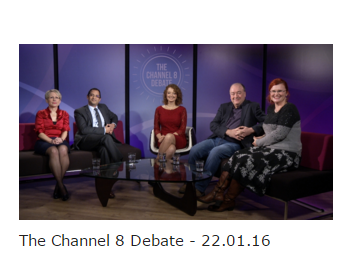
2. Social Media Interaction
Press clippings alone are not enough these days. You need to trace coverage from journalists, influencers, bloggers, twitters, social share, likes, favourites, and LinkedIn comments.
They all take part in the ‘emotion’ side of the PR conversation you are building on behalf of your clients. Also, keep track of your communication with your key media contacts. This will help shape your pitches’ style. You’ll be able to see which messages resonate best, and which you could have done better. You may discover new allies for future campaigns.
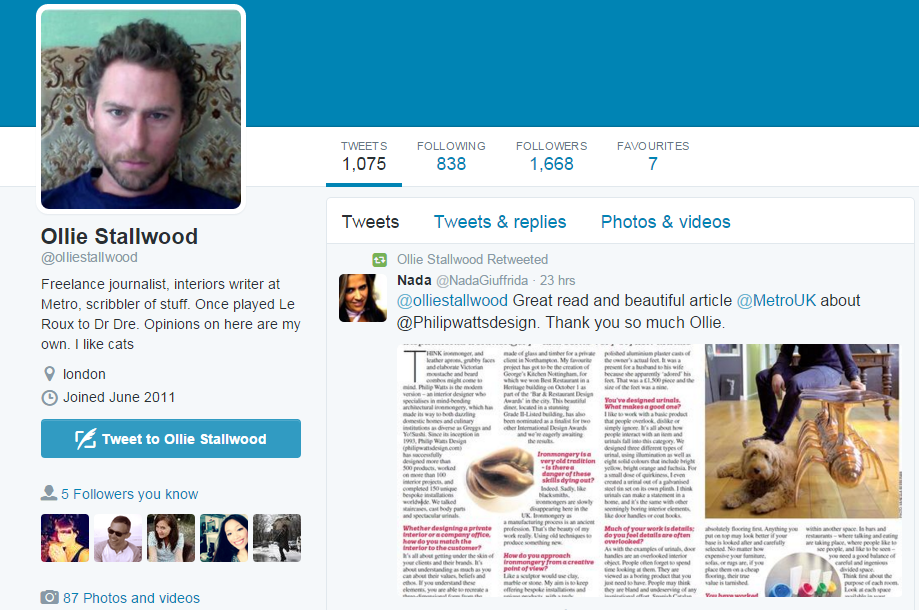
3. Targeted Traffic
I never thought in my career that I could become a PR snob, but I have. I instantly disregard any sites under 25 Domain Authority. Is that bad? Will it affect the chance to gain additional links for my clients? Perhaps. However time is precious, and accountable for, so my personal motto is to pursue media outlets as follows:
- Clients’ ‘Wish Lists’
- Clients’ sectors that have been openly discussed being of importance for further exposure and potential enquiries/sales
Bargaining on numbers alone means revealing the intelligence behind our work, and our clients pay for that. They pay for our work ‘behind the scenes’ that goes beyond just securing links, no matter where they are secured.
Blitzing the internet for very small blogs, or unknown entity sites that are willing to give you a link is a mediocre way to show our working efforts at the end of the month in our reports. We must add some weight to the media outreach and feel proud to have chosen those outlets for a specific reasons. A reason that should go hand in hand with:
- Working very close with your client (you are not a supplier, you are their business partner)
- Formulating a strategy that your client is happy with (eg: which sectors shall we target first? are industry case studies a way to add weighty material?)
- Reviewing on a regular basis which tactics worked best and which can be improved.
Examples:
A) If your client is the only institution to offer flexible, online, fully accredited courses in engineering, appearing in an education specific targeted title is extremely focused. Therefore a respectable Domain Authority of 50, like in this case, is considered a highly qualitative metric. Some PR pros make the mistake or re-using the good contact they may have with the editor to guarantee another link and placement for another client, and in some cases they may even get it. However, think about it: if your clients sells cosmetics, spare yourself the time and effort to place them in a site like this. Links at all costs don’t always work. It will be a worthless exercise to the client and also to the audience reading the site.
B) If you have a client that offer flexible, online fully accredited degree courses, and you organise a phone interview for them to speak to a journalist who writes solely for the Guardian Education pages, this must have its own value, even when it’s just a good brand mention and a quote in big letters, like in the example below. This is because a relationship has now been established between the client and the journalist, who did not know anything about them before you got involved. The trust is now there for the journalist to consider coming back to you in the future to request information again.
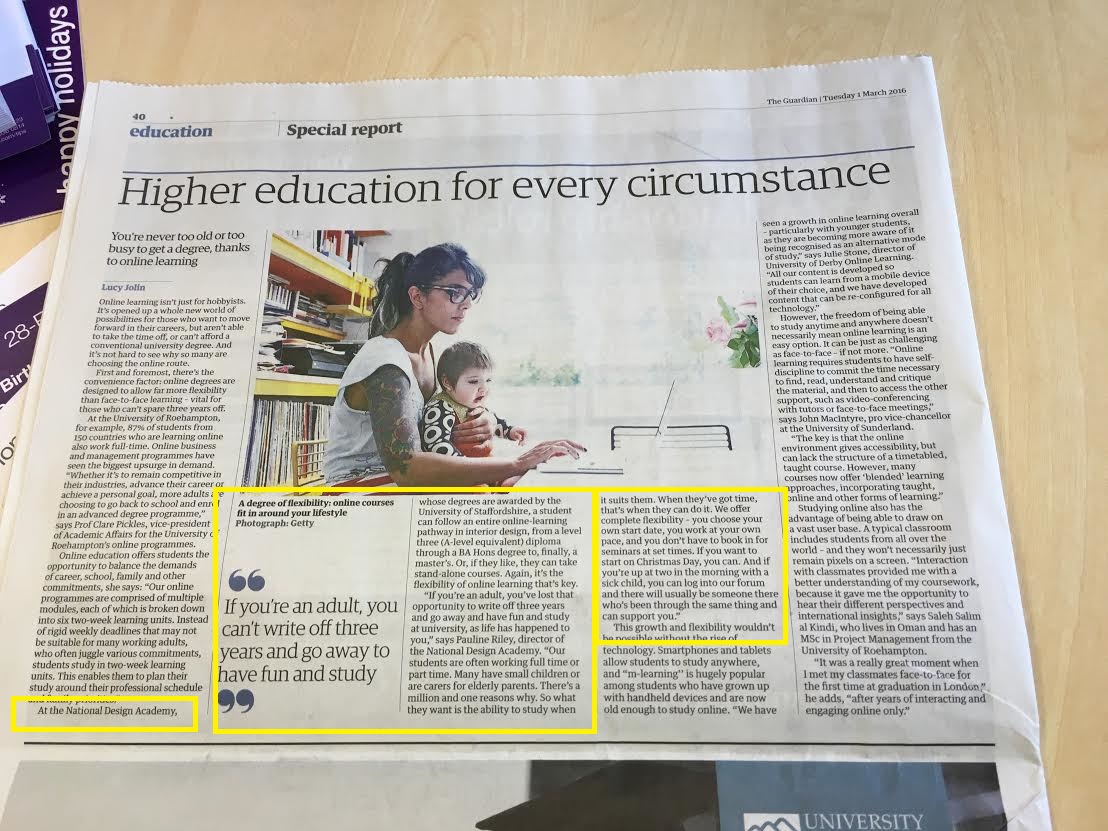
4. Citation Volume
Count how many times your client receives a mention by media outlets, journalists, freelancers, bloggers, customers, and others on social and digital media. This will account for the influence your client has on a conversation.
There are three types of citation volume: unbranded, branded and target audience.
- Unbranded mention volume: the number of times keywords related to your client or its products/services are mentioned. This is a measure of how successfully you’re inserting your brand in the industry conversation. Your goal is to educate your media outlets on your brand’s products and services and eventually increase your share of the conversation.
- Branded mention volume: the number of times your client’s name is mentioned. These should be tracked and measured on a frequency that makes sense to your client. According to the size of the company and industry sector, these could be measured on a weekly, monthly or quarterly basis. Monitoring branded mentions will allow you to identify opportunities to build relationships and strengthen your client’s brand reputation.
- Specific Target audience: the number of times your client is mentioned by your target audience media outlets. This is the big boy. The most worthy one. Mentions in your client’s target audience really proves the value of your PR work on a qualitative level.
Look at how much earned media you’re gaining from targeted outlets and prospects on social to help demonstrate the value of your media outreach.
5. Emotion
Comments on social and in traditional media can have positive, negative or neutral sentiment. It goes without saying that PR pros aim to increase the number of shares of positive sentiment, but we need to bear in mind that no brand will ever have 100% positive sentiment at all times. In the meantime, it is our job to handle expectations by working towards little percentages increase.
If you don’t have a starting point, pick a period of time, look at the sentiment of the branded conversation and then use it as your base. If you’re looking at your social audience and notice a negative comment or a complaint, use this chance to turn a hater into a brand advocate. Helping your client by amending a tricky situation will openly and publicly show your client excellent customer service handling skills. And people will remember that.
Neutrals mentions are also good and will most likely make up the majority of the media conversation around your clients, as long as they are informative and topical.
Tip: Check for annual events or awareness days throughout the year. Make sure that, if relevant to their industry, your client has a share of the voice.
Example: A global leading software firm, delivering classroom management and online safety solutions, secured a ‘share of voice’ in a highly quality media IT outlet during ‘Safer Internet Day 2016’.
6. Industry Awards
As part of our role as PR pros, our goal is to help raising our clients’ awareness and authority. So why not looking at researching – or entering on their behalf – national or regional industry awards?
Just remember that an application doesn’t always result in a win. As a form of tracking measure, determine how many awards you’ll apply for each year and set a reasonable number for possible wins. Accolades improve reputation and help establish your client as a leader within their specific industry. Measuring their final value can be difficult, but they can add extra content material to be used socially or with media outlets.
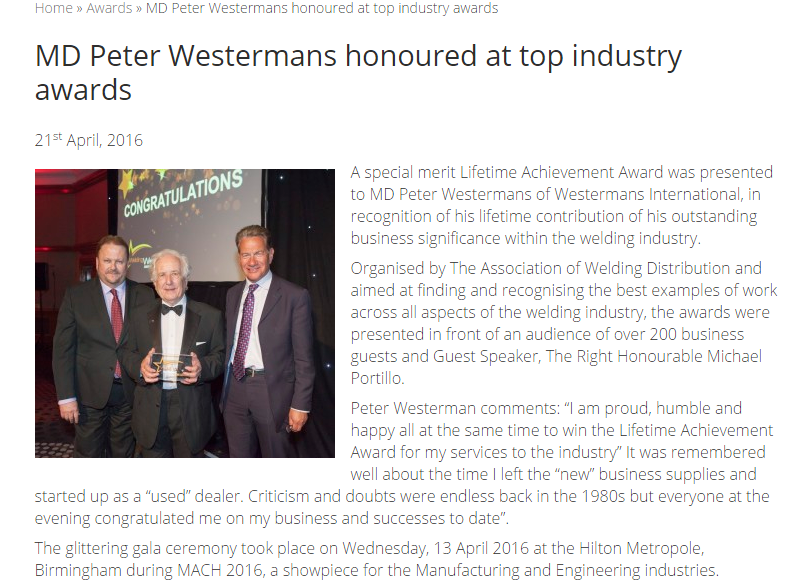
7. Competitors
Remember that your client is fighting for a place in the targeted media outlets together with its competitors. Discuss this with your client and find out if this is a metric they’d like you to review and monitor on their behalf. You can calculate ‘share of voice’, showing how your client’s mentions stack up against the competition and determines your position overall. In other words, who has the largest slice of the pie?
8. Enquiries, Leads and Sales
Ascertaining which one of your public relations efforts resulted in a sale is hard. But thanks to digital support, referral analysis will help your work by indicating which link produced the most leads. That’s the true beauty of digital PR.
Examples:
- One link placed for a client during the last Black Friday weekend (November), in a highly targeted news site (DA: 77) resulted in nearly 40,000 user sessions and a total of £378, 786 worth of revenue.
- The second link, second highest also in terms of sessions (DA: 66), gained in a highly targeted news site, amounted to £17,481 worth of sales.
- The third one (DA: 86) accounted for a respectable £20,388 worth of sales.
- And interestingly, the link secured in the Mirror national newspaper (DA:90) reported only 182 users sessions and resulting in relatively small sales of £2,141, compared to the other links mentioned above. This proves the point I made earlier about targeting sector/industry sites that are specifically important to your client.
Thanks to the revolution of digital PR, it is now fairly easy to ascertain the success of a digital PR campaign.
In Conclusion
- To track the value PR, forget advertising value equivalent (AVEs). Long Live The Traceable Link.
- Decide ahead, and with your client, what needs to be measured. What do they want to achieve? Advocacy? Thought-leadership? Sector-led enquiries? Brand mentions in strong authoritative outlets, like a national newspaper? Pure links to help them with ranking? Benchmark online competitors’ activities? Mentions in their ‘wish-list’ media titles?
- Media measurement still requires a mix of both quantity and quality links. But please don’t focus on numbers alone.
- Social media is a measurable tool. Track as you go along. Historical data is a precious resource. Use it to establish benchmarks and compare outcomes of past content material.
Finally, take credit for your hard work, for the blood sweat and tears that went into securing each of every single piece secured. You’ve earned it.
